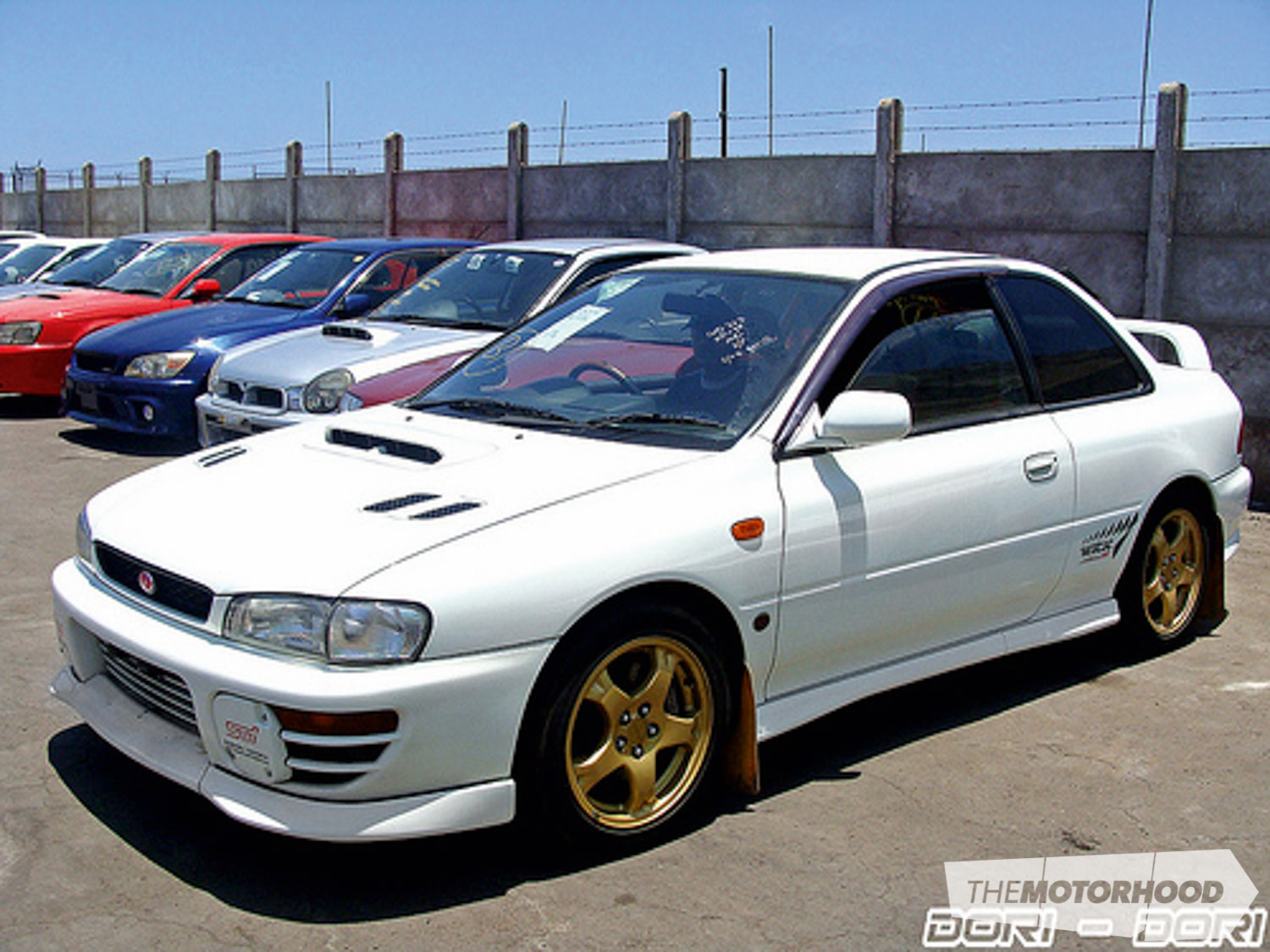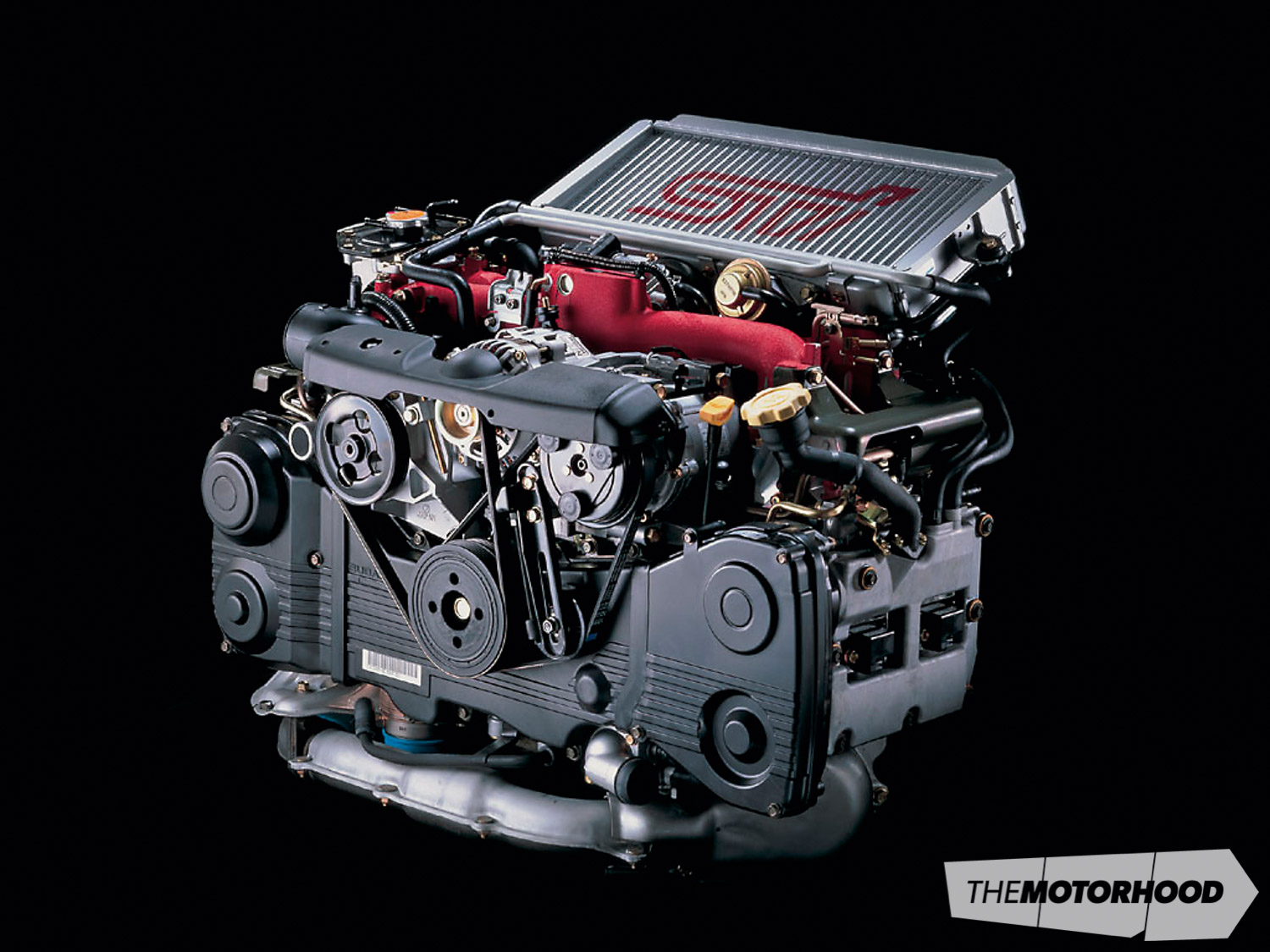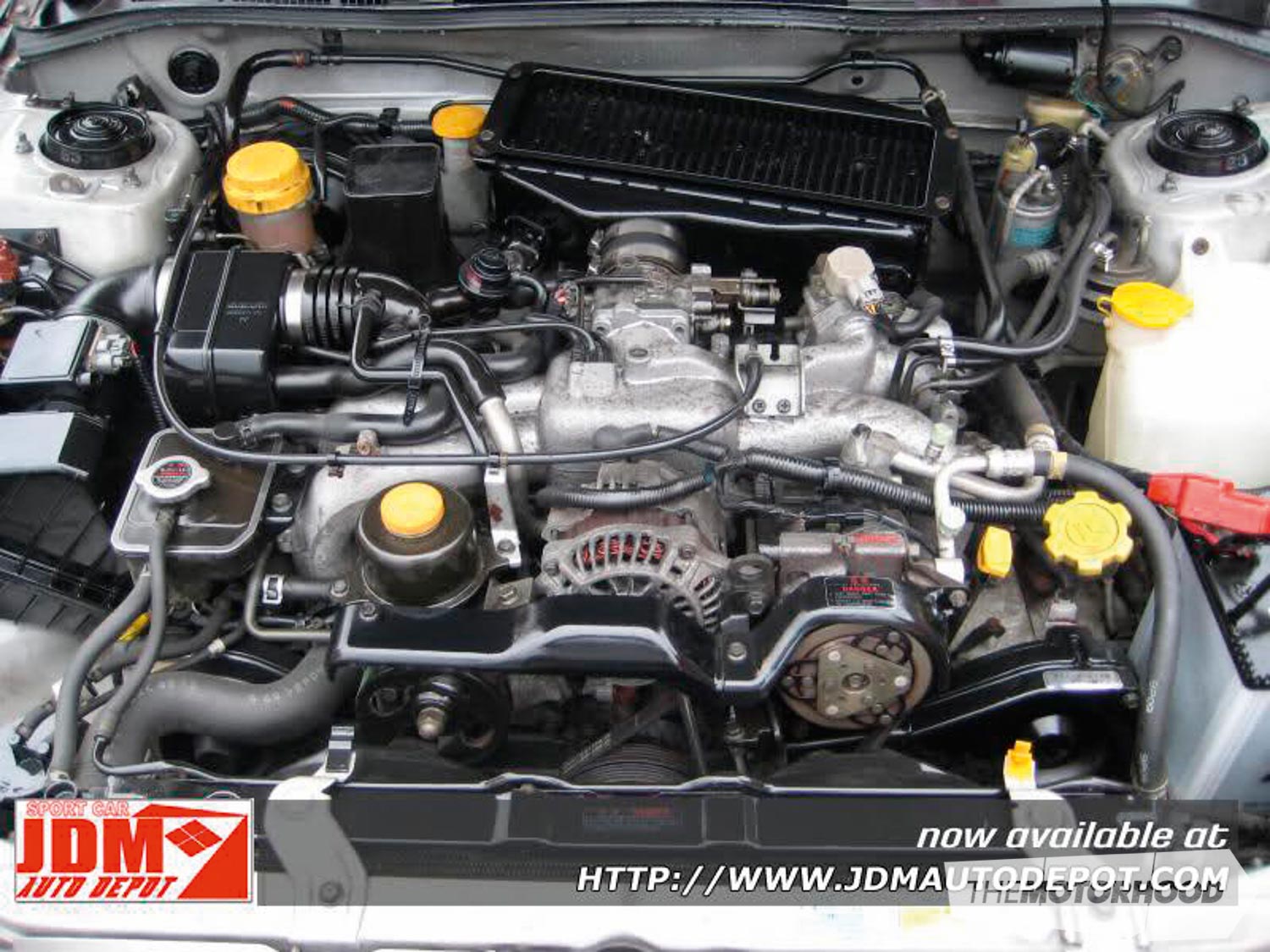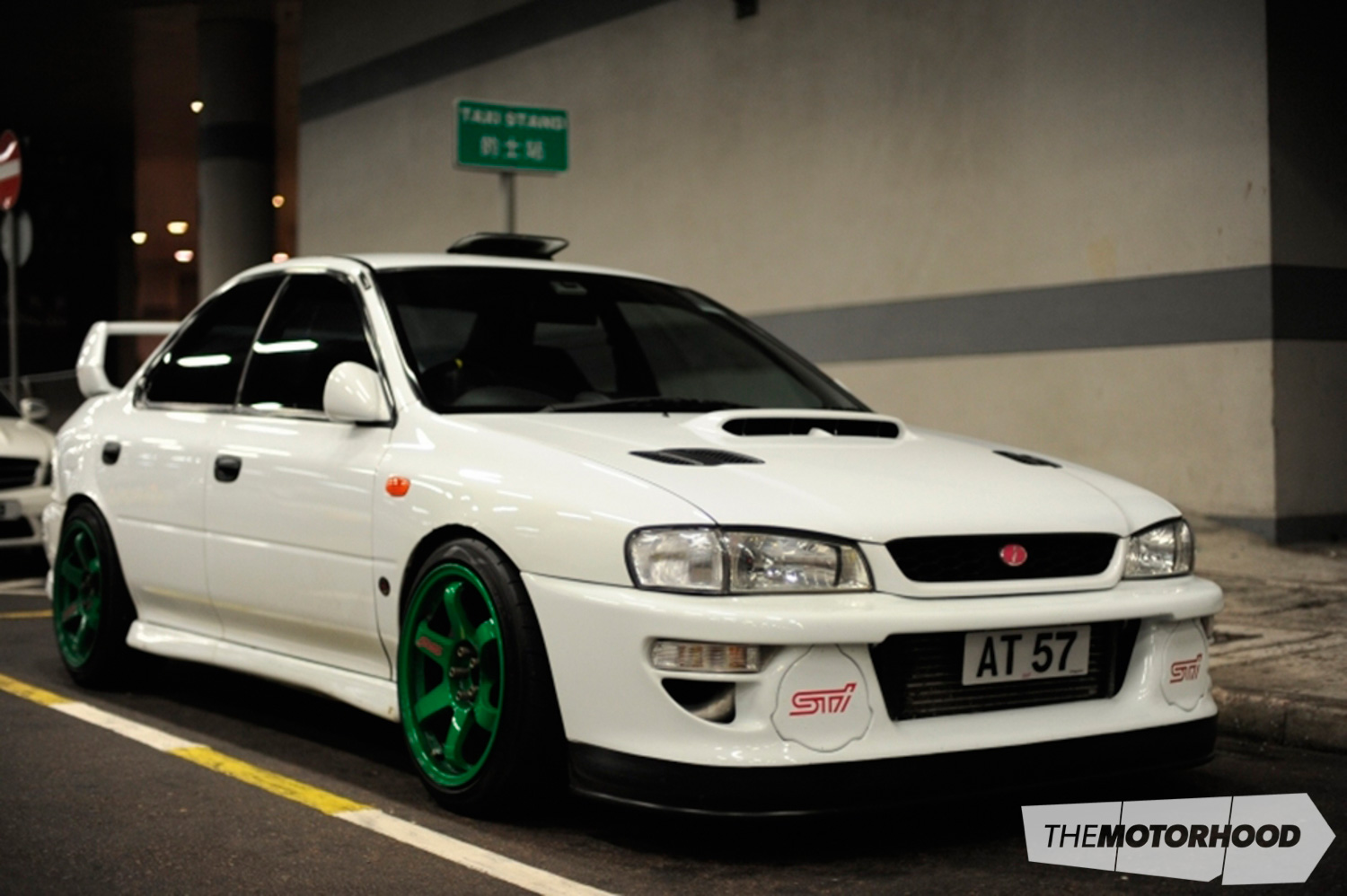
This month we will cover what we think is one of the best budget performance cars in terms of overall power, grip, and handling, the Subaru WRX. It’s a model with a massive motorsport heritage, and is used the world over in many different styles of racing — and in some cases even drifting.
The Version 1 through to 6 WRXs are lightweights at around 1250kg, and produce great power from factory. Combine that with a rally-inspired four-wheel-drive gearbox, and what you have is a very competitive chassis which will set you back around $4000. The best of the lot in terms of factory performance potential and price would be Version 3 and 4, the two we cover here.

Engine
The non-STI WRX feels punchy and responsive from factory, and though the golf-ball-sized TD04 turbo doesn’t put out big numbers, the set-up does make for a nice car to drive around town. From factory these engines produce around 125–135kW at the wheels, depending on the dyno and engine condition. Extracting extra power is relatively simple if you have the know-how and the required tools.
The Version 3 STI was blessed with the best factory turbo, the VF22. This is a ball-bearing unit with the largest exhaust housing out of all the factory turbos, and is good for 298kW (400hp) in the right application (the factory non-STI block won’t support this power, however).
Make sure you purchase a boost pressure gauge to keep an eye on any boost increases after installing the STI turbo. Once you have the VF22 turbo, you need to find the Version 3 STI ECU, an orange-sticker air-flow meter and yellow-top 440cc injectors to complete the STI upgrade recipe. With the VF22 installed along with the other STI parts, you should see around 150–165kW at the wheels — that’s a good 30kW gain at the wheels for very minimal outlay.
The factory STI intake system has been proven to flow over 240kW, so all we need to do here is find a Version 3 STI intercooler, or if you like the look of a front-mounted intercooler, they can be had at a very reasonable price, though there’s a trade-off. Using one on a WRX will reduce intake temps hugely, but it will also increase turbo lag. If you think that’s worth it, then it’s a great upgrade.
Make sure to avoid oiled air filters with the WRX, as the oil can coat the hot wire inside the airflow meter and cause over-fuelling issues. Find a well-priced three-inch exhaust system, ideally from the turbo back, for the biggest power gains and added distinctive Subaru growl, along with a higher-flowing downpipe for better turbo response.
If you’re using this car as a daily driver, running 16psi all day and every day may not be ideal as far as fuel economy and engine longevity are concerned. The answer is to use an electronic boost controller to rule boost pressure. A quality Japanese second-hand item should set you back around $200, while a new reputable Japanese unit will start in at $500.

Driveline and suspension/handling
Weighing in at around 1250kg makes the older WRX a lightweight compared with today’s vehicles, and ensures some great fun in the twisties. However, from factory Subaru engineers designed the WRX to understeer, something a responsible car manufacturer does to ensure a vehicle can be safely driven in all conditions.
Cool story and all, but understeer isn’t much fun, which brings us to our first handling upgrade, the rear sway bar. The factory 17mm rear sway bar isn’t anything to boast about, so we will track down a factory STI Version 3 item, which is 20mm. This should kill some body roll and give us a much better turn-in with less understeer.
A fully adjustable Whiteline sway bar is the ultimate in budget kits, although still more expensive than the factory STI sway bar, and it’ll measure in at 22–24mm depending on your budget and needs. By now, if your factory shocks haven’t started leaking, they have most likely been replaced or they are about to start leaking. For a cheap upgrade, grab some factory Version 6 STI shocks and springs and install them. These have an increased damper and a larger 40mm monotube design, so should give you a good improvement in handling.
STI WRXs came with alloy front lower control arms, which are said to be a good upgrade over the stock WRX items, and you’ll feel the benefit in terms of driver feedback.

Exterior/Interior aesthetics
The amazing thing about Subarus is that they are built with the same ideology that Lego has for its building blocks — pull ’em apart and place the bits onto anything you want. Nearly every model of Subaru has some interchangeable parts with another, and the WRX is no different. The most popular aesthetic modifications done to the Version 3 and 4 WRX are the front-end swap for the Version 5 and 6 gear.
The Version 6 STI is much cleaner looking, and has the ability to run a much larger front lip. Pretty much everything from the Version 5 and 6 will bolt onto the Version 3 and 4. Although the non-STI WRX comes with bucket seats, the STI Version 7 and 8 seats look much better and are a direct bolt-on. They are also likely to have much less bolster wear, being later model. Everything else in the WRX interior is satisfactory, even the factory Nardi steering wheel.

Results
Now that you have a fire-breathing STI-stomping WRX, it’s time to have some fun. Head to the local racetrack, touge or open road to enjoy the well-rounded Subaru you have just built.
As we mentioned in the previous issue, general maintenance is key on any performance car. None of the above modifications should be completed if the car isn’t healthy to begin with. Turbocharged vehicles require a more frequent oil change, and the WRX is no exception. Check out all the bushes, especially diff bushes, and make sure to replace all the bushes when upgrading suspension components.





